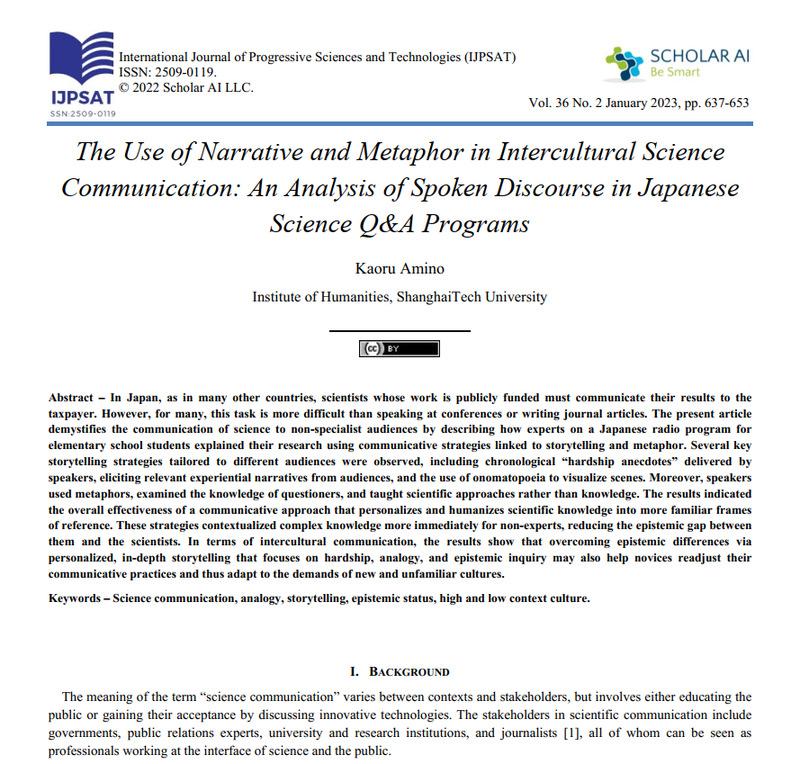
近日,我院網野薰菊教授在国际期刊IJPSAT(International Journal of Progressive Sciences and Technologies)上发表研究成果。国际进步科学与技术期刊(IJPSAT)是以跨学科研究为主要领域的综合期刊,涵盖工程、科学和技术领域等广泛主题。
In Japan, as in many other countries, scientists whose work is publicly funded must communicate their results to the taxpayer. However, for many, this task is more difficult than speaking at conferences or writing journal articles. The present article demystifies the communication of science to non-specialist audiences by describing how experts on a Japanese radio program for elementary school students explained their research using communicative strategies linked to storytelling and metaphor. Several key storytelling strategies tailored to different audiences were observed, including chronological “hardship anecdotes” delivered by speakers, eliciting relevant experiential narratives from audiences, and the use of onomatopoeia to visualize scenes. Moreover, speakers used metaphors, examined the knowledge of questioners, and taught scientific approaches rather than knowledge. The results indicated the overall effectiveness of a communicative approach that personalizes and humanizes scientific knowledge into more familiar frames of reference. These strategies contextualized complex knowledge more immediately for non-experts, reducing the epistemic gap between them and the scientists. In terms of intercultural communication, the results show that overcoming epistemic differences via personalized, in-depth storytelling that focuses on hardship, analogy, and epistemic inquiry may also help novices readjust their communicative practices and thus adapt to the demands of new and unfamiliar cultures.
论文题目:
The Use of Narrative and Metaphor in Intercultural Science Communication: An Analysis of Spoken Discourse in Japanese Science Q&A Programs
论文链接:https://ijpsat.org/index.php/ijpsat/article/download/5006/3114
